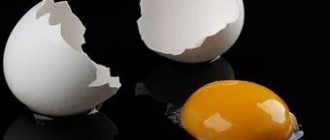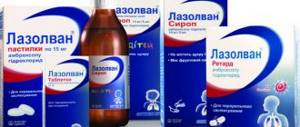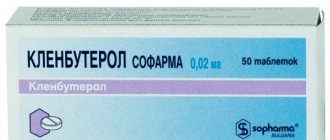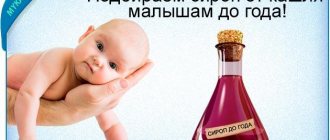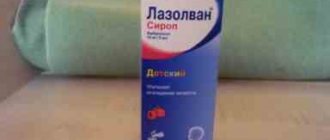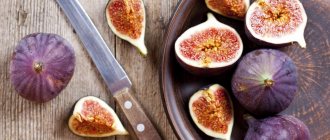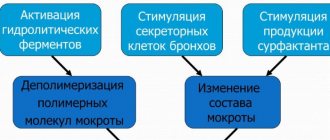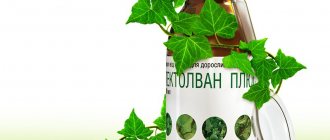Release form and composition
Dry cough syrup for children is available in the form of a powder for preparing a solution for internal use: heterogeneous, brownish-gray with inclusions of a lighter color, smelling of anise oil;
ready-made aqueous solution – brown (1.47 g each in laminated paper bags, five or ten bags in a cardboard pack; 19.55 g each in 200 ml glass bottles, one bottle in a cardboard box). Composition of 1 sachet (single dose):
- active ingredients: ammonium chloride – 37.5 mg, dry extract of licorice root – 75 mg, sodium benzoate – 150 mg, dry extract of marshmallow root – 300 mg, sodium bicarbonate – 150 mg;
- auxiliary components: sucrose – 750 mg, anise oil – 3.7 mg.
Composition of 1 bottle with a capacity of 200 ml:
- active ingredients: ammonium chloride – 500 mg, dry extract of licorice root – 1000 mg, sodium benzoate – 2000 mg, dry extract of marshmallow root – 4000 mg, sodium bicarbonate – 2000 mg;
- auxiliary components: sucrose – 10000 mg, anise oil – 50 mg.
Dry cough syrup for children is produced in the form of a powder for preparing a solution for oral administration: a loose mass with a heterogeneous structure, brown-red color with light inclusions, has a specific odor, clumping is allowed; when dissolved in water (1:10), a brown solution is formed (1.47 g in laminated paper bags, in a cardboard pack of 5, 10, 20, 50, 100 or 200 bags; 1.47 g in a plastic jar, in 1 can in a cardboard pack; 19.55 g each in 200 ml glass bottles, 1 bottle in a cardboard pack).
1 bottle of powder contains:
- active ingredients: marshmallow root extract – 4 g; licorice root extract – 1 g; sodium bicarbonate – 2 g; sodium benzoate – 2 g; ammonium chloride – 0.5 g; anise oil – 0.05 g;
- auxiliary ingredient: sugar.
1 sachet or 1 jar contains:
- active ingredients: marshmallow root extract – 0.3 g; sodium bicarbonate – 0.15 g; sodium benzoate – 0.15 g; dry extract of licorice roots – 0.075 g; ammonium chloride – 0.0375 g; anise seed oil – 0.0037 g;
- auxiliary component: sucrose.
- The medicines included in the mixture promote the separation of secretions in the tracheobronchial tree, relieve the inflammatory process and help in expectoration of sputum.
- In the initial stages of colds and viral diseases of the respiratory tract, a dry cough is observed, which implies the presence of sputum and the inability of the lungs to cope with its elimination on their own.
- Therapy is then aimed at thinning the mucus and irritating the ciliated epithelium, which helps facilitate coughing.
- To develop a wet cough, children need to take a dry mixture at the earliest stages of the disease in order to stimulate the process of liquefying the bronchodilator secretion.
- Therapy with other drugs should begin after this stage has been overcome.
- The faster mucus is cleared from the respiratory tract, the faster you can achieve recovery and use less potent medications.
The anti-inflammatory, antitussive and expectorant effect of dry cough medicine is provided by the following active ingredients:
- Licorice root and anise oil. Used to provide expectorant, anti-inflammatory and antispasmodic (relieving spasms and dilation of the bronchi) effects;
- Sodium bicarbonate. It is used in the preparation to liquefy sputum by moving it towards the alkaline side of its reaction, stimulating the function of the ciliated epithelium. This increases the activity of the epithelium and stimulates bronchial secretion.
- Liquiritoside - has an antispasmodic effect.
- Marshmallow root - has a weak anti-inflammatory, enveloping, expectorant, bronchosecretory, antimicrobial and bactericidal effect. Bronchial secretion is stimulated reflexively due to irritation of the receptors in the oral and gastric mucosa by this substance. The formation of sputum is significantly activated, its viscosity and adhesiveness decreases, and the movement of the ciliated epithelium and bronchioles increases. A protective shell is created on the mucous membrane of the respiratory apparatus from compounds in marshmallow, which stimulates regenerative processes and reduces inflammation in it.
- Ammonium chloride is secreted by the bronchial mucosa partly as ammonium carbonate, which acts as an alkali similar to the mucolytic effect.
The drug is used as a general cough therapy for different age groups, including newborns and young children.
For example, leave cough suppressant medicine at night, and other expectorants during the day.
Depending on the form of release of the drug, in a bottle or in a bag, different methods of diluting the medicine are recommended.
The contents of the sachet should be dissolved in a tablespoon of water. Be sure to use cooled, boiled water to dilute the medicine.
The medication is used strictly after meals with regularity 3-4 times a day.
| Age | Dose, ml |
| From 0 to 12 months | 15-20 drops |
| From 1 to 2 years | 40 drops |
| From 3 to 4 years | 2.5 ml |
| From 5 to 5 years | 3.75 ml |
| From 7 to 8 years | 5 m |
| From 9 to 12 years | 10 ml |
| Over 12 years old | 15 ml |
To more easily determine the dose at home, you can use a regular medical syringe with marks or a teaspoon and a tablespoon. For a tablespoon the volume is 5 ml, for a tablespoon – 15 ml.
Rules of application
- When using the drug in the treatment of preschool children, it is necessary to strictly observe the periods and dosage;
- The treatment period with this remedy is on average 2-3 weeks;
- The contents of the sachets or bottles must be diluted with the strictly specified amount of water;
- Dry cough syrup is not used as an independent remedy, but is used as part of complex therapy;
- The composition should not be taken simultaneously with drugs intended to suppress the cough reflex.
Composition and beneficial properties
Dry cough syrup is a combination remedy. It helps to liquefy and remove mucus from the respiratory tract, and also has an anti-inflammatory effect. These effects are due to the presence of herbs such as:
- liquorice root;
- medicinal marshmallow;
- anise oil.
Also among the components of the drug are ammonium chloride, sodium bicarbonate and benzoate. To improve the taste, sugar is added to the mixture.
The medicine is available in the form of a gray powder with a brown tint and has an anise aroma. Before use, a suspension should be prepared from it by dissolving in water. Sometimes the powder may form lumps, but this does not in any way affect the quality of the drug.
The mixture is sold in 200 ml bottles, packed in cardboard boxes. In pharmacies you can also find the drug in sachets designed for one use. They are usually sold in packs of 5 or 10 pieces. The price of the medicine in such packaging is significantly lower than in the bottle.
Dosage and method of use
With some respiratory diseases, a cough occurs, which significantly spoils the life of not only the sick child, but also those around him. To cope with this disease, there are various drugs, including dry medicine.
Today we will look at the instructions in detail and find out in what cases it can be used, how to properly prepare the solution and what the dosage should be.
Release form
The dry mixture is produced in the form of a powder from which a solution is prepared and taken orally. The powder is either in portioned paper bags or in glass containers with a volume of 200 ml. The kit also includes instructions for use.
Compound
The composition includes main and auxiliary components. The main substances are:
- licorice root extract;
- marshmallow root extract;
- anise oil;
- sodium bicarbonate;
- sodium benzoate;
- ammonium chloride.
Confectionery sugar is used as an auxiliary component.
Operating principle
Thanks to the complex action of all components, the mixture helps to effectively liquefy mucus and remove it from the respiratory tract, and also has an anti-inflammatory effect.
- Licorice root extract stimulates the ciliated epithelium and bronchial glands, resulting in easy mucus discharge and also relieves spasms.
- Marshmallow root extract irritates the mucous membranes of the mouth and stomach and thereby reflexively improves bronchial secretion. Activates the production of sputum, reduces its viscosity, adhesiveness and promotes exit from the respiratory tract. It is also worth noting that the mucus found in marshmallow creates a protective layer on the mucosa, stimulates its regeneration and reduces inflammatory processes.
- Anise oil is a component with antimicrobial, antispasmodic and bactericidal properties.
- Sodium bicarbonate or baking soda, which we all know, promotes expectoration. Once inside the body, it is first absorbed and then released by the mucous membrane, stimulates bronchial secretion and activates the epithelium. In addition, this substance affects the pH of saliva, making it alkaline, which helps reduce the viscosity of sputum and improve its discharge.
- Ammonium chloride also affects the pH of saliva and has a pronounced mucolytic effect.
Indications
The main indication for the use of dry and wet cough mixture for children under one year of age, as indicated in the instructions for use, is the treatment of:
- bronchopneumonia or pneumonia;
- bronchitis of various origins;
- tracheitis.
According to the instructions for use, this drug is contraindicated for children under 6 months of age. At this age, the respiratory system is still too weak and will not be able to cope with the mucus produced. Therefore, the optimal age is from 6 months.
There are a number of contraindications specified in the instructions for use, in the presence of which it is not recommended to give the product. These include:
- Intolerance to the components included in the composition.
- Intolerance to sucrose, fructose and isomaltose.
- Pathological processes in the kidneys (pyelonephritis or glomerulonephritis).
- Impaired absorption of carbohydrates in the intestines.
- If we talk about adults, then this drug should not be used by pregnant and nursing mothers.
For cooking you will need boiled chilled water. If you use a dosed package containing 1.47 g of the substance, then its contents must be mixed with 1 tbsp. l. water.
If a bottle is used, then you need to add water to the indicated mark and shake well so that all components dissolve. Shake the bottle before each use.
The prepared solution is taken before meals, 3-4 times a day.
Depending on age, according to the instructions, a certain dosage is prescribed:
- from 6 months to a year – up to 20 drops;
- 1-2 years – 35-40 drops;
- 3-4 years – ½ tsp;
- 5-6 years – 2/3 tsp;
- 7-8 years – 1 tsp. ready solution;
- 9-12 years – 2 tsp. or 10 ml;
- From 12 years and older – 1 tbsp. l.
On average, the course of treatment is up to 3 weeks.
Overdose
The instructions for use do not describe cases of overdose with this drug, however, if the child has taken too much of the mixture and his health has worsened, it is recommended to give a sorbent and, if necessary, perform a gastric lavage.
The dry mixture, as indicated in the instructions, should not be taken simultaneously with other substances that block coughing, as well as with substances that reduce phlegm production. Therefore, it is important not to self-medicate, but to contact a doctor who can competently prescribe a course of treatment, taking into account all these features.
Analogs
Today there are no complete analogues of dry medicine for children. There are a whole host of drugs used to treat this disease, but it is extremely difficult to call them analogues.
Reviews
If you are in doubt and have not yet decided whether to give your child this medicine or not, we suggest that you read some reviews from parents who have already used this medicine.
- Marina writes her story: she suffered from pneumonia, which resulted in a cough, and the doctor prescribed a dry mixture. The drug is relatively inexpensive and did an excellent job of treating this residual disease, despite the fact that it is a drug for children. She also gave it to her children, the product is really effective, and it has a fairly pleasant taste and aroma.
- Olga writes the following: she and her son were admitted to the hospital with complex bronchitis. The baby underwent comprehensive treatment, including taking antibiotics. After discharge, the doctor prescribed continued medication treatment at home, and one of the recommended medications was dry cough syrup. The first thing that confused me was the cost, it was too suspiciously low. However, the pharmacy still advised me to take it, because the composition is natural and the product is effective. And so it turned out that the baby’s cough was completely gone, and now they always have this remedy in their first aid kit, just in case.
- Maria has been using the dry mixture for 14 years and gives it to her daughters when they have a cough. It helps not only children, but also adults, and has a reasonable price.
- User Elena shares her story: when her son was 7 months old, the doctor recommended this drug for a cough, but the child was prone to allergies and it appeared on the second day. Despite this, the dry mixture really helped, but do not forget about possible allergies if the baby is prone to it.
- User Seajade also shares her review: her child had a cough, and the doctor suggested trying this medicine, the drug is inexpensive and helps many. And indeed, it was so, the cough went away. The dry mixture is easily diluted, and if the baby does not want to drink it, you can put it in a syringe and give it in small portions.
Helpful information
Children often have a cough, and today you can buy various tablets for children, and for the little ones you can find a variety of syrups. Some parents have a question: is it possible to give antibiotics for coughs? Can Mucaltin help in all cases? If you want to understand these issues, we recommend that you also read these articles.
How do you treat coughs in your children and have you ever used dry mixture for children? Please share your stories and recommendations that can help others. We will also be glad if you leave your feedback about this article in the comments.
When the first signs of a cold appear, it is important to alleviate the condition. An effective dry cough medicine for children with instructions in sachets will allow you to quickly overcome the signs of the disease. The natural active base activates the body’s protective properties, relieves inflammation and irritation.
Cough is one of the body’s protective reactions to various external irritants. These can be bacteria, viruses, toxic substances. There are several types, classified according to the form and duration of the disease.
Types of coughs for which dry mixture is used:
- Unproductive - characterizes the lack of secretion formation, soreness, and irritation of the larynx. The main causes are colds. One of the symptoms of inflammatory processes in the respiratory system, attacks irritate the mucous membranes and lead to an increase in the intensity of the cough.
- Productive - the removal of bacteria from the respiratory tract is accompanied by the formation of secretions, which significantly accelerates the course of the disease. A wet cough is less uncomfortable than a dry cough and is a sign of bronchitis or pneumonia. Often becomes the final stage of a nonproductive cough.
According to the duration of the course, acute and chronic are distinguished. The first lasts no more than 3 weeks, and for its treatment it is recommended to use dry mixtures. Chronic cough is a symptom of pathological processes in the cardiovascular system, digestive system, and also occurs with allergies.
In the complex treatment of colds, as well as to overcome various forms of cough, doctors prescribe a mixture.
The advantage is the content of plant extracts of licorice, marshmallow, and anise oil, known for their antitussive properties.
In addition to herbal components, it can be used to treat children of different age groups, ranging from 1 year (some drugs from 6 months) to 18 years.
Instructions on how to dilute the mixture:
- When using sachets for single doses, the powder is dissolved in a dosage of 1:10, that is, in 15 ml of boiled, non-hot water.
- Shake the contents well before use.
- Store in the bottle after dilution for no more than 10 days in the refrigerator.
- Powders for one-time use after diluting the solution can be taken within 48 hours; in dry form they are stored for 18 months.
Do not dilute the mixture with tea, juice or milk. You can use special water intended for baby food.
The combined preparation contains sodium bicarbonate, which stimulates the synthesis of secretions and reduces the viscosity of secretions. Plant extracts have antibacterial and antispasmodic effects.
The combination of sodium benzoate and ammonium chloride ensures rapid removal of phlegm. Dry cough syrup for children has contraindications, instructions in sachets - individual sensitivity to the components of the composition.
Drug interactions
When using Dry Cough Mixture for children, the following undesirable effects may occur: vomiting, nausea, diarrhea, allergic reactions. The drug may irritate the gastric mucosa.
Dry cough syrup for children is not recommended to be taken simultaneously with drugs that reduce sputum production, as well as with antitussives.
The combined drug has an expectorant and anti-inflammatory effect. Dry marshmallow root extract enhances the secretion of bronchial glands, dry licorice extract has anti-inflammatory, expectorant and antispasmodic effects. Sodium bicarbonate shifts the pH of bronchial mucus to the alkaline side, reduces the viscosity of sputum; licorice root has anti-inflammatory and antispasmodic effects; sodium benzoate and ammonium chloride have an expectorant effect.
Concomitant use with antitussive drugs, as well as drugs that reduce sputum production, is not recommended.
Cough medicine for children is a combination of medicinal substances with antitussive, expectorant, and anti-inflammatory effects.
The medical product Cough Mixture for children is composed of the following medicinal components: marshmallow extract, licorice extract, sodium benzoate, sodium bicarbonate and ammonium chloride.
Licorice root extract. The structure of the extract contains saponins, including triterpene glycyrrhizin, which has stimulating properties in relation to the adrenal cortex. The extract also includes about twenty-seven flavonoids, ascorbic acid, pectin substances and resins. The medicinal component exhibits positive biological effects, in particular, it has powerful anti-inflammatory effects, since it inhibits exudative and proliferative processes during inflammation.
Marshmallow root extract. It has expectoration properties due to the influence of polysaccharides included in the extract. In the process of reflex stimulation, there is an increase in the physiological activity of epithelial ciliated tissues and an increase in the peristaltic movement of the terminal branches of the bronchial tree, which helps the movement of bronchial secretion from the lower parts of the respiratory system upward and its subsequent exit. It also enhances the production of bronchial secretions and reduces its viscosity.
Sodium bicarbonate increases the pH value of sputum and thins it.
Ammonium chloride and sodium benzoate exhibit expectorant effects.
It is not recommended to use the drug Cough Medicine for Children simultaneously with drugs that have an antitussive effect.
Combined use with substances that exhibit properties of reducing bronchial secretion is not recommended.
There is no information on clinical studies of this interaction.
Dry cough syrup for children is a combination preparation with components of plant origin, which has an expectorant and anti-inflammatory effect. The drug is intended to remove mucus from the respiratory tract when coughing.
The mechanism of action of the medicine is due to the following properties of its active substances:
- dried marshmallow root extract: promotes increased secretion of bronchial glands;
- licorice root: has anti-inflammatory, expectorant and antispasmodic effects;
- sodium bicarbonate: causes a decrease in sputum viscosity, a shift in the acidity of bronchial mucus to the alkaline side;
- ammonium chloride and sodium benzoate: have an expectorant effect.
- from the immune system: possible allergic reactions;
- from the digestive system: possible - diarrhea, nausea, vomiting, irritation of the gastric mucosa.
The simultaneous use of dry cough mixture for children with medications that suppress cough and reduce the formation of sputum is contraindicated.
Drug interactions
During therapy with Cough Mixture for children, it is possible to develop manifestations of an allergic nature, which can manifest as rash reactions, itching, and redness of the skin. Usually this may be due to the patient's hypersensitivity to the components included in the medication, as well as their intolerance.
The medicine can irritate the mucous membrane of the stomach and gastrointestinal tract, which can cause nausea, vomiting and various disorders of the digestive system.
In the event of the development of side effects described in the instructions for use, as well as if any other negative symptoms occur, it is recommended to interrupt the therapeutic course and seek advice from a specialist doctor.
The cough suspension is well accepted by young patients. Side effects are likely in case of individual intolerance or non-compliance with the indicated dosages.
In most cases, this affects the functioning of the gastrointestinal tract and is characterized by the following manifestations:
- nausea;
- stomach irritation;
- diarrhea;
- vomit.
In addition, allergic reactions are possible, accompanied by rashes and itching.
There are also contraindications to prescribing the medication:
- acute pyelonephritis;
- allergy;
- acute glomerulonephritis;
- sensitivity to the ingredients of the drug;
- infancy (up to six months).
For children with diabetes, the drug is prescribed with extreme caution. Do not use in combination with other antitussives. To avoid unwanted consequences, use dry cough syrup for children only after consulting a pediatrician.
In the video below from the School of Doctor Komarovsky, the doctor talks in detail about the mechanism of action of cough medications.
Dosage - how to take it correctly
If a doctor prescribes dry cough syrup for children, the instructions tell in detail how to take the composition correctly. There are no special rules or requirements here, but you need to remember that the dose of medicine is not the same for different ages, so you should not experiment on a child.
Dosage of the drug for children:
- 15-20 drops (infants up to one year);
- 35-40 drops (from one to two years);
- 2.5-3 ml (3-4 years);
- 3.7 ml (5-7 years);
- 5 ml (8 years);
- 10 ml (9-11 years);
- 15 ml (after 12 years).
In treatment, it is important to adhere to the requirements specified by the manufacturer. In no case should you exceed the specified norm or combine the composition with other medications. Complex treatment is possible only with the permission of a doctor, since the drug may not be combined with some medications.
You only need to take the composition three times a day. If a severe cough is accompanied by complications, the doctor may recommend increasing the amount of use of the drug, but this happens extremely rarely. The duration of the course should not exceed 3 weeks. If during this time the intensity of the cold symptom does not decrease, be sure to get tested again - it is likely that the cough arose for a completely different reason and requires special treatment with more powerful medications.
special instructions
Dry cough syrup for children does not affect the patient’s ability to perform work that requires increased concentration and quick reaction.
A single dose of the drug contains 0.06 XE (bread units), which should be taken into account when prescribing this drug to patients with diabetes.
Impact on the ability to drive vehicles and operate machinery
The drug does not affect the ability to perform potentially hazardous activities that require increased concentration of attention and speed of psychomotor reactions (including driving vehicles, working with moving mechanisms).
When taking the drug, patients with diabetes should take into account that the carbohydrate content in it is as follows: 1 drop of solution - 0.0002 XE (bread unit), 1 ml - approximately 0.004 XE.
The use of the mixture does not affect the speed of psychomotor reactions and the ability to concentrate.
Storage conditions and expiration dates
Shelf life – 1.5 years.
The purchased medicine has a shelf life of no more than 18 months. Keep a bag or jar of dry mixture in a cool, dark place, away from children. The powder, diluted from a sachet, is suitable for two days, after which it should not be consumed. The diluted consistency in a glass jar can be kept in the refrigerator for no more than ten days.
Store in a dry, dark place at a temperature not exceeding 25°C. Keep away from children.
The prepared solution should be stored in a dark place at temperatures up to 12°C for no more than two days.
The shelf life of the drug is 18 months.
Store at temperatures up to 25 °C, protected from moisture and light. Keep away from children.
Shelf life – 1.5 years.
Description of the medicine
Dry mixture for children helps with coughs caused by irritation from exposure to sputum. The product enhances the motility of the bronchial epithelium, relieves irritation, and soothes. Made from plant ingredients.
The drug is known for the following actions:
- anti-inflammatory;
- expectorant;
- secretory.
Composition of the drug
The dry mixture contains:
- Dry licorice root extract (glycyrrhizin). Promotes natural discharge of sputum, providing bronchial stimulation.
- Liquiritoside. Known for antispasmodic activity.
- Anise oil. It has antimicrobial, antispasmodic and bactericidal effects.
- Ammonium chloride. Provides a mucolytic effect.
- Marshmallow root. It has enveloping, expectorant, bronchosecretory, and anti-inflammatory properties.
- Sodium bicarbonate is an expectorant component.
Release forms
The drug is made in powder form for further dilution with water.
The medicine has two forms of release:
- in paper bags of 1.47 g;
- in glass bottles of 200 ml.
A liquid preparation is prepared from children's dry cough medicine in bags or bottles.
Popular children's cough medicines
All types of potions have the same principle of action.
All over the world, doctors prescribe cough medicine for children, the instructions for which state that it is produced to liquefy and remove mucus from the bronchi, as well as to improve the activity of the ciliated epithelium of the bronchi.
The drugs restore the local immune system and have an anti-inflammatory effect on the entire body. Thanks to the perfectly combined components in the composition of the medicine, the mixture has a negative effect on all sides on the emerging symptoms that provoke a serious illness.
Pharmacies offer many drugs that fight cough, but some mixtures stand out in popularity:
- "Bronholtin" is an antitussive, bronchoseptic and bronchodilator. The constituent components improve breathing, dilate the bronchi, eliminate swelling of the bronchial mucosa; pregnant and lactating women, children under three years of age, and people suffering from heart failure are not allowed to be treated with this drug.
- "Lazolvan" - used for acute bronchitis, regardless of the type of cough. Improves expectorant anti-inflammatory effect. Does not provoke allergic reactions. After consulting with a doctor, pregnant women can use the medicine. Helps babies well from birth.
- Children's cough medicine "Sinekod" , the instructions for which are freely available, is used for dry cough. Causes allergies, nausea, vomiting, malaise. Prohibited for children under two years of age, syrup is used from the age of three, and tablets after 12 years of age.
- "Codelac Broncho" - used for wet cough. It stimulates the expectorant effect and is also used for prophylactic purposes. The drug contains thyme, it restores the bronchial mucosa after inflammation and promotes rapid recovery. Codelac Broncho is available for adults and children from two years of age.
The cost of children's dry medicine depends on the manufacturer, but does not exceed 35 rubles; the medicine can be purchased in any city and in any pharmacy. An analogue of “Sinekod” in the form of syrup costs about 300 rubles, a similar drug “Lazolvana” has an average cost of 200 rubles.
Use during pregnancy and breastfeeding
The use of the solution is contraindicated during pregnancy and breastfeeding.
The use of the drug during pregnancy and breastfeeding is contraindicated.
Cough medicine for children is prohibited for use in women during pregnancy, since there is no data on studies of the drug’s effects on the intrauterine development of the fetus and the health of the mother.
If it is necessary to use the medicine during lactation, it is recommended to stop breastfeeding.
High-quality analogues
If a child has an individual intolerance to the components of the Cough Mixture, the doctor selects a high-quality analogue for him. It is more convenient for children to take medications in the form of syrup (Alteyka, Pertussin, Bromhexine). These preparations have a sweet taste and pleasant texture. They envelop the mucous membrane of the throat, reducing pain.
You can make your own cough medicine at home. Thus, an effective mucolytic and expectorant is warm milk with honey, soda, mineral water or melted butter. A good result appears after taking a breast mixture or a decoction of plantain leaves, linden flowers, and rose hips.
